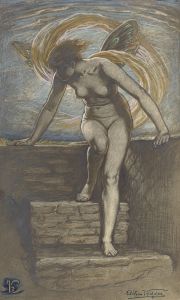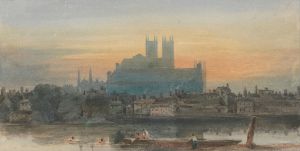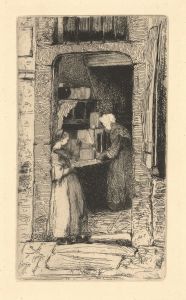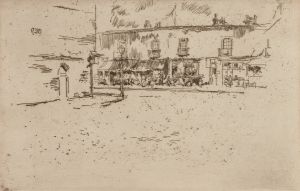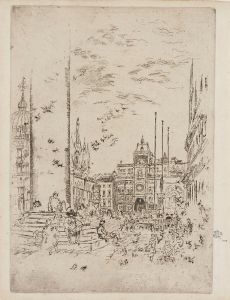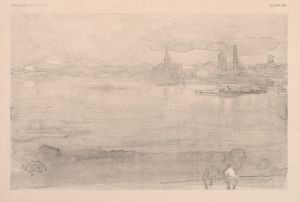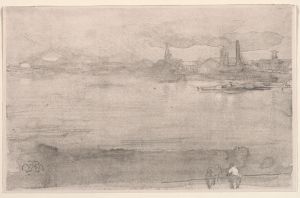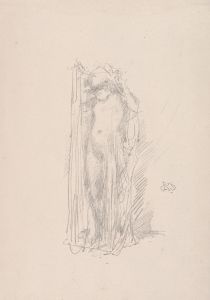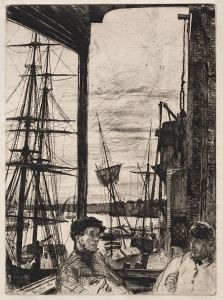
Battersea; Dawn 1877
A hand-painted replica of James Abbott McNeill Whistler’s masterpiece Battersea; Dawn 1877, meticulously crafted by professional artists to capture the true essence of the original. Each piece is created with museum-quality canvas and rare mineral pigments, carefully painted by experienced artists with delicate brushstrokes and rich, layered colors to perfectly recreate the texture of the original artwork. Unlike machine-printed reproductions, this hand-painted version brings the painting to life, infused with the artist’s emotions and skill in every stroke. Whether for personal collection or home decoration, it instantly elevates the artistic atmosphere of any space.
"Battersea; Dawn" is a painting created in 1877 by the American-born artist James Abbott McNeill Whistler. Whistler, who spent much of his career in England, is known for his contributions to the Aesthetic Movement, which emphasized the visual and sensual qualities of art over its narrative content. This painting is one of Whistler's many works that capture the atmospheric effects of light and color.
The painting depicts a view of the Thames River at dawn, with the Battersea area of London in the background. Whistler's choice of subject reflects his fascination with the interplay of natural light and urban landscapes. The composition is characterized by its subtle gradations of color and tone, creating a serene and almost ethereal quality. The use of muted colors and delicate brushwork is typical of Whistler's style during this period, which was heavily influenced by Japanese art and the principles of "art for art's sake."
"Battersea; Dawn" is part of Whistler's "Nocturnes" series, a collection of paintings that explore the effects of twilight and night. These works are notable for their innovative use of color and composition, which were groundbreaking at the time and contributed to the development of modern art. Whistler's Nocturnes often feature simplified forms and a limited color palette, focusing on the mood and atmosphere of the scene rather than detailed representation.
The painting was created using oil on canvas, a medium that allowed Whistler to achieve the delicate transitions of light and shadow that characterize the work. The soft, almost blurred edges of the forms in the painting suggest a sense of quiet and stillness, inviting the viewer to contemplate the beauty of the moment captured.
Whistler's approach to painting was influenced by his belief in the importance of harmony and balance in art. He often compared his paintings to musical compositions, using terms like "symphonies" and "nocturnes" to describe them. This analogy underscores his focus on the aesthetic experience of the viewer, rather than on conveying a specific narrative or message.
"Battersea; Dawn" reflects Whistler's mastery of technique and his ability to evoke a sense of place and time through his art. The painting is a testament to his skill in capturing the transient effects of light and atmosphere, and it remains an important example of his work within the Aesthetic Movement.
The painting is held in a private collection, and as such, it is not as widely known or exhibited as some of Whistler's other works. However, it continues to be appreciated by art historians and collectors for its beauty and technical excellence.
In summary, "Battersea; Dawn" by James Abbott McNeill Whistler is a significant work that exemplifies the artist's innovative approach to painting and his contribution to the Aesthetic Movement. Through its delicate use of color and light, the painting captures the quiet beauty of a London dawn, inviting viewers to appreciate the harmonious interplay of natural and urban elements.





